Determining Information Quality in ICT Systems
Abstract
1. Introduction
2. State of the Art
- Syntactic IQ is the degree to which the data conform to a specific syntax;
- Semantic is the unique and unambiguous conformance between identifiable data units and the entities represented;
- Pragmatic quality is conformance with the requirements concerning the use.
3. IQ Measure
4. Research Problem and Research Methodology
5. Uncertainty Modeling on the Basis of the Theory of Mathematical Evidence
6. Multi-Layer Modeling of Uncertainty Using the Hybrid Method
7. Method Demonstration
8. Conclusions and Summary
Author Contributions
Funding
Institutional Review Board Statement
Informed Consent Statement
Data Availability Statement
Conflicts of Interest
References
- Massachusetts Institute of Technology Information Quality (MITIQ) Program. Available online: http://mitiq.mit.edu (accessed on 3 June 2021).
- Fisher, C.; Lauria, E.; Chengalur-Smith, S.; Wang, R. Introduction to Information Quality; Authorhouse: Bloomington, IN, USA, 2011. [Google Scholar]
- International Organization for Standardization. Data Quality—Part 8: Information and Data Quality: Concepts and Measuring; ISO/IEC 8000-8:2015; ISO: Geneva, Switzerland, 2015. [Google Scholar]
- International Organization for Standardization. Information Technology—Vocabulary—Part 28: Artificial Intelligence—Basic Concepts and Expert Systems; ISO/IEC 2382:2015: 2121272, 2121271 & 2123204; ISO: Geneva, Switzerland, 2015. [Google Scholar]
- Tatarkiewicz, W. History of Philosophy, 22nd ed.; PWN: Warsaw, Poland, 2014; Volumes 1–3. [Google Scholar]
- International Organization for Standardization. Quality Management Systems—Fundamentals and Vocabulary; ISO/IEC 9000:2015; ISO: Geneva, Switzerland, 2015. [Google Scholar]
- Stawowy, M.; Olchowik, W.; Rosiński, A.; Dąbrowski, T. The Analysis and Modelling of the Quality of Information Acquired from Weather Station Sensors. Remote Sens. 2021, 13, 693. [Google Scholar] [CrossRef]
- Wang, R.Y.; Pierce, E.M.; Madnick, S.; Fisher, C.W. (Eds.) Information Quality. Advances in Management Information Systems; M.E. Sharpe: Armonk, NY, USA, 2005. [Google Scholar]
- Batista, M.D.; Salgado, A.C. Information Quality Measurement in Data Integration Schemas. In Proceedings of the Fifth International Workshop on Quality in Databases, QDB 2007, at the VLDB 2007 Conference, Vienna, Austria, 23 September 2007. [Google Scholar]
- Lee, S.; Haider, A. A Framework for Information Quality Assessment Using Six Sigma Approach. Communications of the IBIMA; IBIMA: King of Prussia, PA, USA, 2011. [Google Scholar] [CrossRef][Green Version]
- Mai, J.E. The Quality and Qualities of Information. JASIST 2013, 64, 675–688. [Google Scholar] [CrossRef]
- Stawowy, M. Quality of Information Fed by Video Surveillance Systems Protecting Critical Infrastructure. WUT J. Transp. Eng. 2014, 104, 103–113. [Google Scholar]
- Stawowy, M. Determination of Information Quality of Motorway Telematics. WUT J. Transp. Eng. 2013, 92, 221–229. [Google Scholar]
- Illari, P.; Floridi, L. Information Quality, Data and Philosophy. In The Philosophy of Information Quality. Synthese Library (Studies in Epistemology, Logic, Methodology, and Philosophy of Science); Springer: Cham, Switzerland, 2014; Volume 358. [Google Scholar] [CrossRef]
- Stawowy, M. Comparison of uncertainty models of impact of teleinformation devices reliability on information quality. In Safety and Reliability: Methodology and Applications—Proceedings of the European Safety and Reliability Conference ESREL 2014; Nowakowski, T., Młyńczak, M., Jodejko-Pietruczuk, A., Werbińska–Wojciechowska, S., Eds.; CRC Press/Balkema: London, UK, 2015; pp. 2329–2333. [Google Scholar]
- Stawowy, M. Model for information quality determination of teleinformation systems of transport. In Safety and Reliability: Methodology and Applications—Proceedings of the European Safety and Reliability Conference ESREL 2014; Nowakowski, T., Młyńczak, M., Jodejko-Pietruczuk, A., Werbińska–Wojciechowska, S., Eds.; CRC Press/Balkema: London, UK, 2015; pp. 1909–1914. [Google Scholar]
- Stawowy, M.; Dziula, P. Comparison of Uncertainty Multilayer Models of Impact of Teleinformation Devices Reliability on Information Quality. In Safety and Reliability of Complex. Engineered Systems—Proceedings of the European Safety and Reliability Conference ESREL 2015; Podofillini, L., Sudret, B., Stojadinovic, B., Zio, E., Kröger, W., Eds.; CRC Press/Balkema: London, UK, 2015; pp. 2685–2691. [Google Scholar]
- Kumar, S.; Jakhar, M. Understanding user evaluation of Information Quality Dimensions in a digitized world. In Proceedings of the POMS Conference, Orlando, FL, USA, 6–9 May 2016. [Google Scholar]
- Arazy, O.; Kopak, R.; Hadar, I. Heuristic Principles and Differential Judgments in the Assessment of Information Quality. JAIS 2017, 18, 403–432. [Google Scholar] [CrossRef]
- Lee, Y.W.; Strong, D.M.; Kahn, B.K.; Wang, R.Y. AIMQ: A methodology for information quality assessment. Inf. Manag. 2002, 40, 133–146. [Google Scholar] [CrossRef]
- Eppler, M.; Muenzenmayer, P. Measuring Information Quality in the Web Context: A Survey of State-of-the-Art Instruments and an Application Methodology. In Proceedings of the Seventh International Conference on Information Quality (ICIQ ’02), Boston, MA, USA, 8–10 November 2002; pp. 187–196. [Google Scholar]
- Greal, G. The Framework of Quality Measurement. Management 2015, 10, 177–191. [Google Scholar]
- Todoran, I.; Lecornu, L.; Khencha, f A.; Le Caillec, J. Information quality evaluation in fusion systems. In Proceedings of the 16th International Conference on Information Fusion, Istanbul, Turkey, 9–12 July 2013; pp. 906–913. [Google Scholar]
- Keeton, K.; Mehra, P.; Wilkes, J. Do you know your IQ? A research agenda for information quality in systems. SIGMETRICS Perform. Eval. Rev. 2009, 37, 26–31. [Google Scholar] [CrossRef]
- Lesot, MJ.; Revault d’Allonnes, A. Information Quality and Uncertainty. In Uncertainty Modeling. Studies in Computational Intelligence; Kreinovich, V., Ed.; Springer International Publishing: Cham, Switzerland, 2017; Volume 683. [Google Scholar]
- Stawowy, M.; Rosiński, A.; Paś, J.; Klimczak, T. Method of Estimating Uncertainty as a Way to Evaluate Continuity Quality of Power Supply in Hospital Devices. Energies 2021, 14, 486. [Google Scholar] [CrossRef]
- Stawowy, M. Method of Multilayer Modeling of Uncertainty in Estimating the Information Quality of ICT Systems in Transport; Publishing House Warsaw University of Technology: Warsaw, Poland, 2019. [Google Scholar]
- Becerra, M.A.; Tobón, C.; Castro-Ospina, A.E.; Peluffo-Ordóñez, D.H. Information Quality Assessment for Data Fusion Systems. Data 2021, 6, 60. [Google Scholar] [CrossRef]
- Stawowy, M.; Rosiński, A.; Siergiejczyk, M.; Perlicki, K. Quality and Reliability-Exploitation Modeling of Power Supply Systems. Energies 2021, 14, 2727. [Google Scholar] [CrossRef]
- Rychlicki, M.; Kasprzyk, Z.; Rosiński, A. Analysis of Accuracy and Reliability of Different Types of GPS. Receiv. Sens. 2020, 20, 6498. [Google Scholar] [CrossRef]
- Klimczak, T.; Paś, J. Basics of Exploitation of Fire Alarm Systems in Transport Facilities; Military University of Technology: Warsaw, Poland, 2020. [Google Scholar]
- Duer, S. Applications of an artificial intelligence for servicing of a technical object. Neural Comput. Appl. 2013, 22, 955–968. [Google Scholar] [CrossRef]
- Bednarek, M.; Dąbrowski, T.; Olchowik, W. Selected practical aspects of communication diagnosis in the industrial network. KONBiN 2019, 49, 383–404. [Google Scholar] [CrossRef]
- Szmel, D.; Zabłocki, W.; Ilczuk, P.; Kochan, A. Selected issues of risk assessment in relation to railway signalling systems. WUT J. Transp. Eng. 2019, 127, 81–91. [Google Scholar] [CrossRef]
- Jacyna, M.; Żak, J.; Gołębiowski, P. The EMITRANSYS model and the possibilities of its application for the analysis of the development of sustainable transport systems. Combust. Engines 2019, 179, 243–248. [Google Scholar] [CrossRef]
- Oleński, J. Economics of Information. The Basics; PWE: Warsaw, Poland, 2001. [Google Scholar]
- Dempster, A.P. Upper and Lower Probabilities Inducted by a Multi-valued Mapping. Ann. Math. Stat. 1967, 38, 325–339. [Google Scholar] [CrossRef]
- Shafer, G. A Mathematical Theory of Evidence; PUP: Princeton, NJ, USA, 1976. [Google Scholar]
- Pieczynski, W. Unsupervised Dempster-Shafer Fusion of Dependent Sensors. In Proceedings of the 4th IEEE Southwest Symposium on Image Analysis and Interpretation, Austin, TX, USA, 2–4 April 2000; pp. 247–251. [Google Scholar]
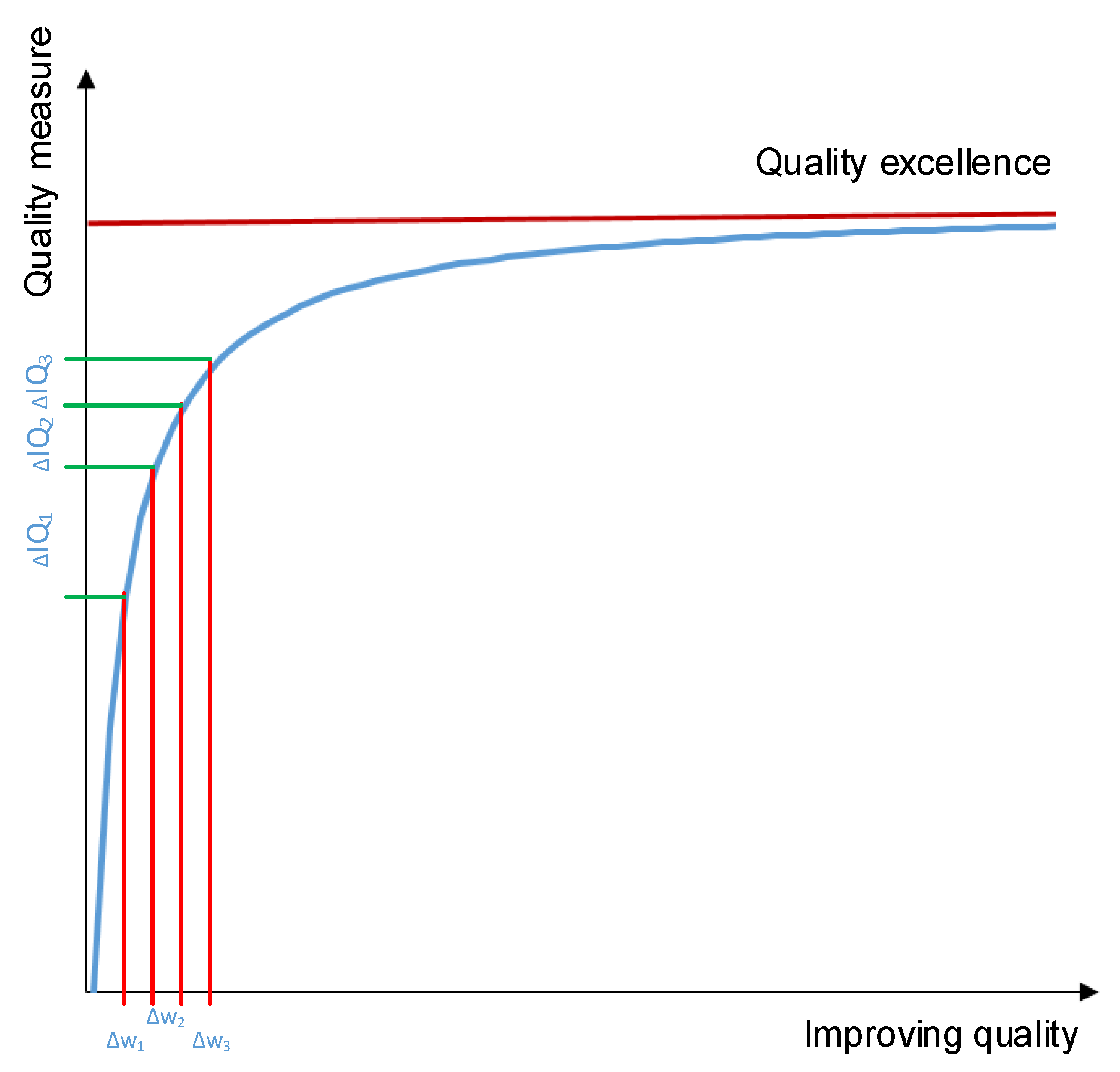
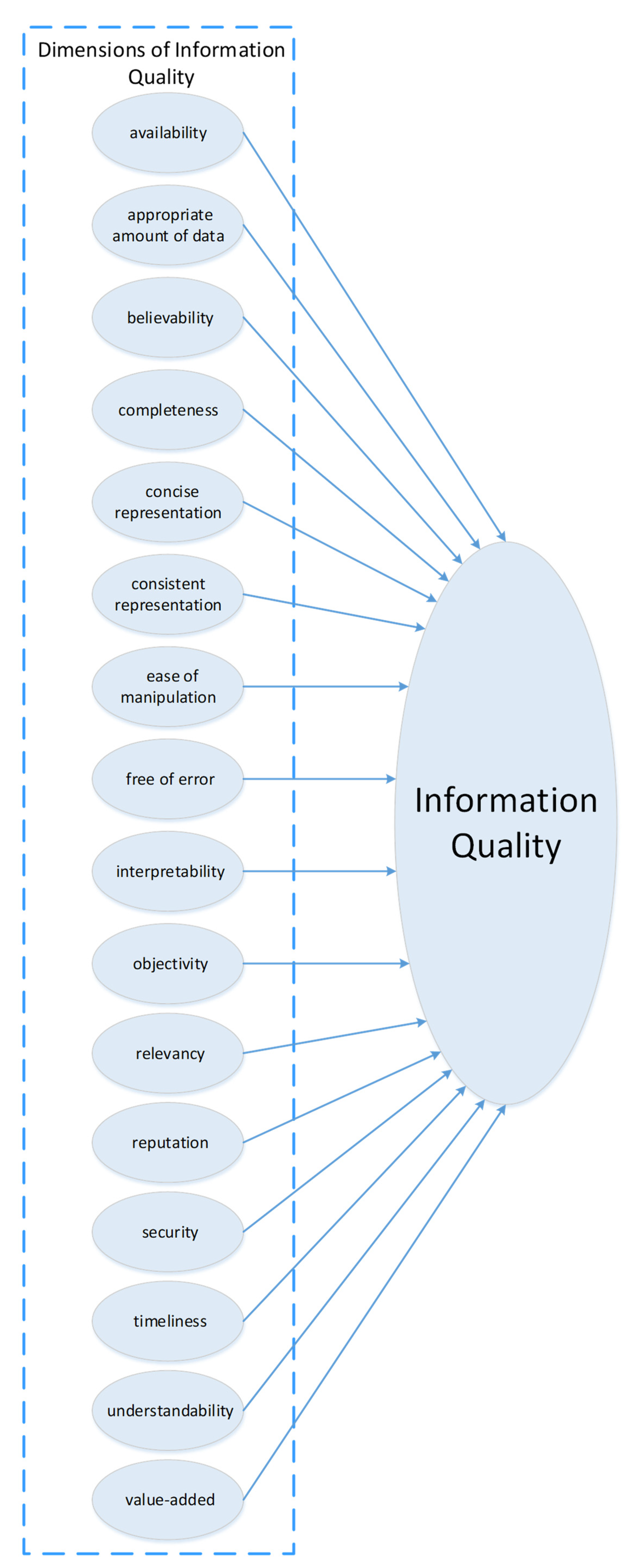
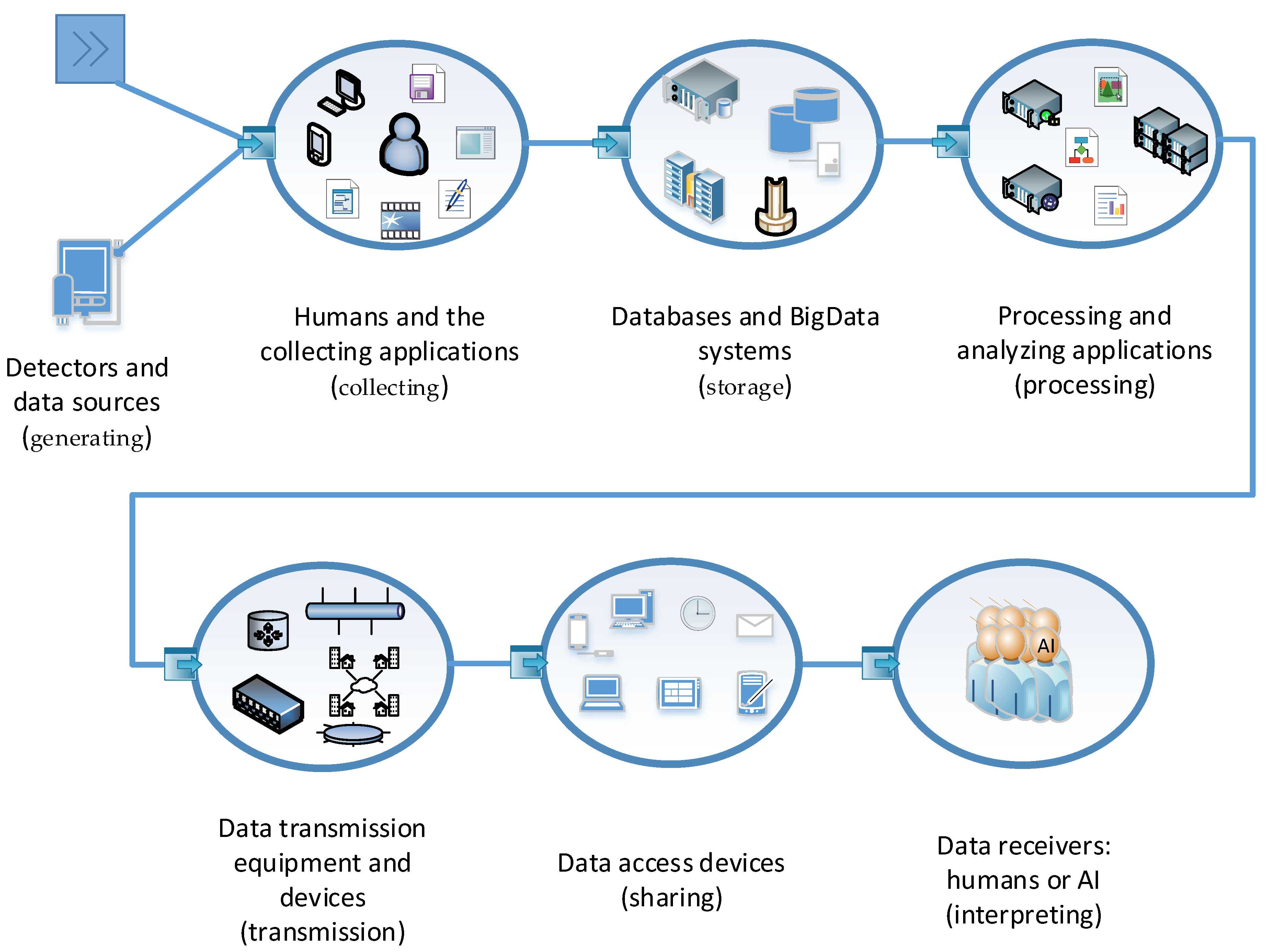
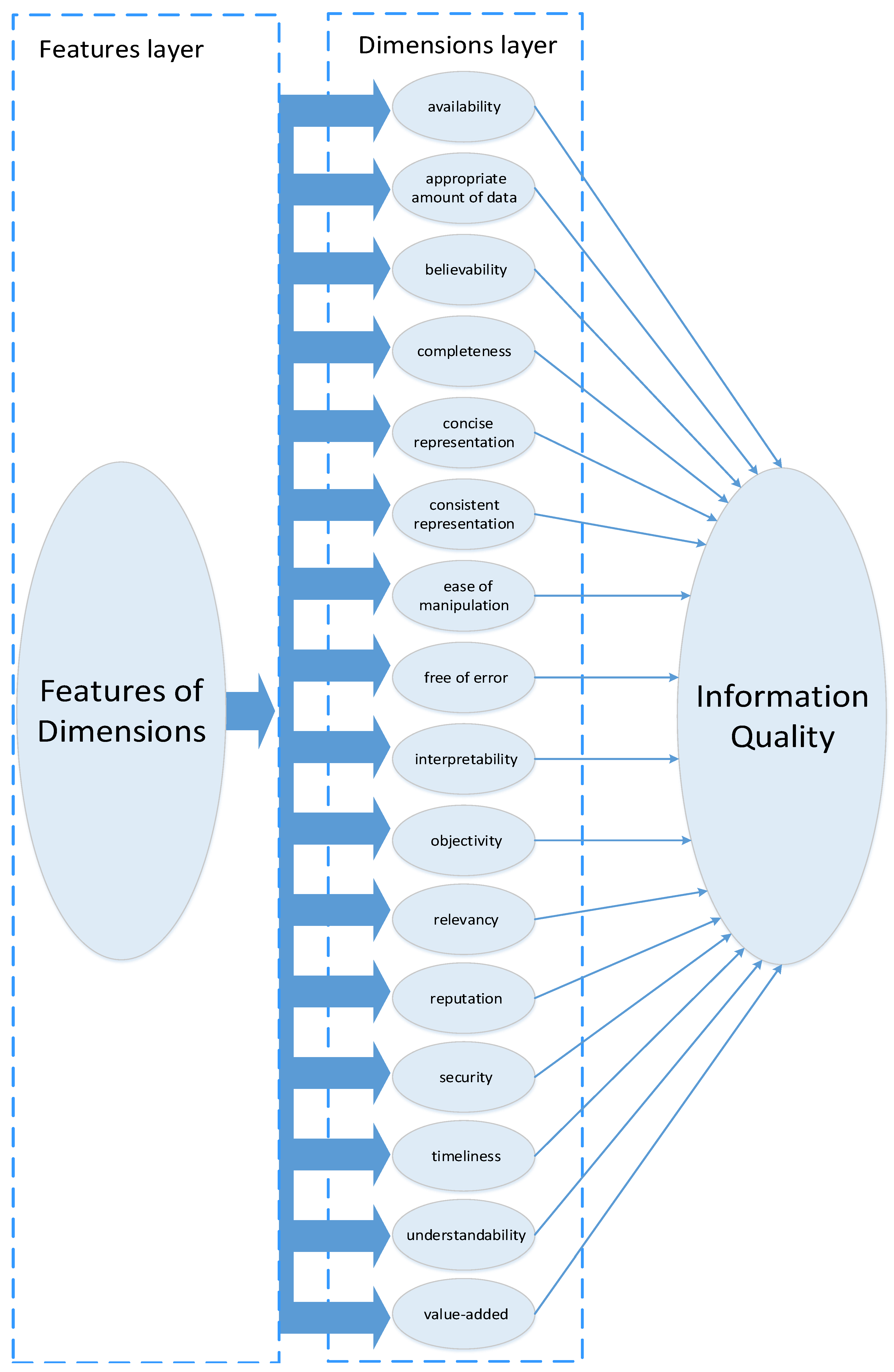
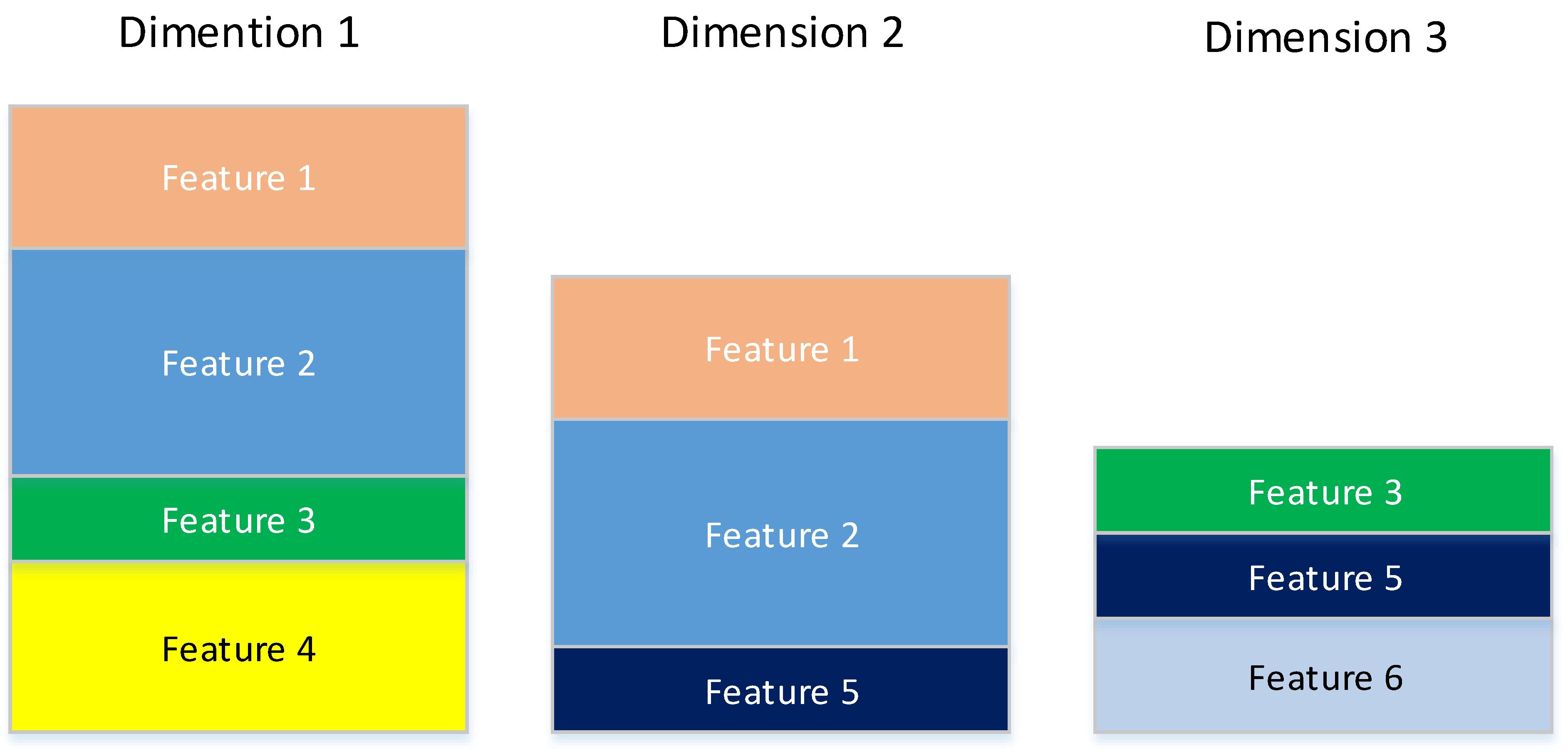
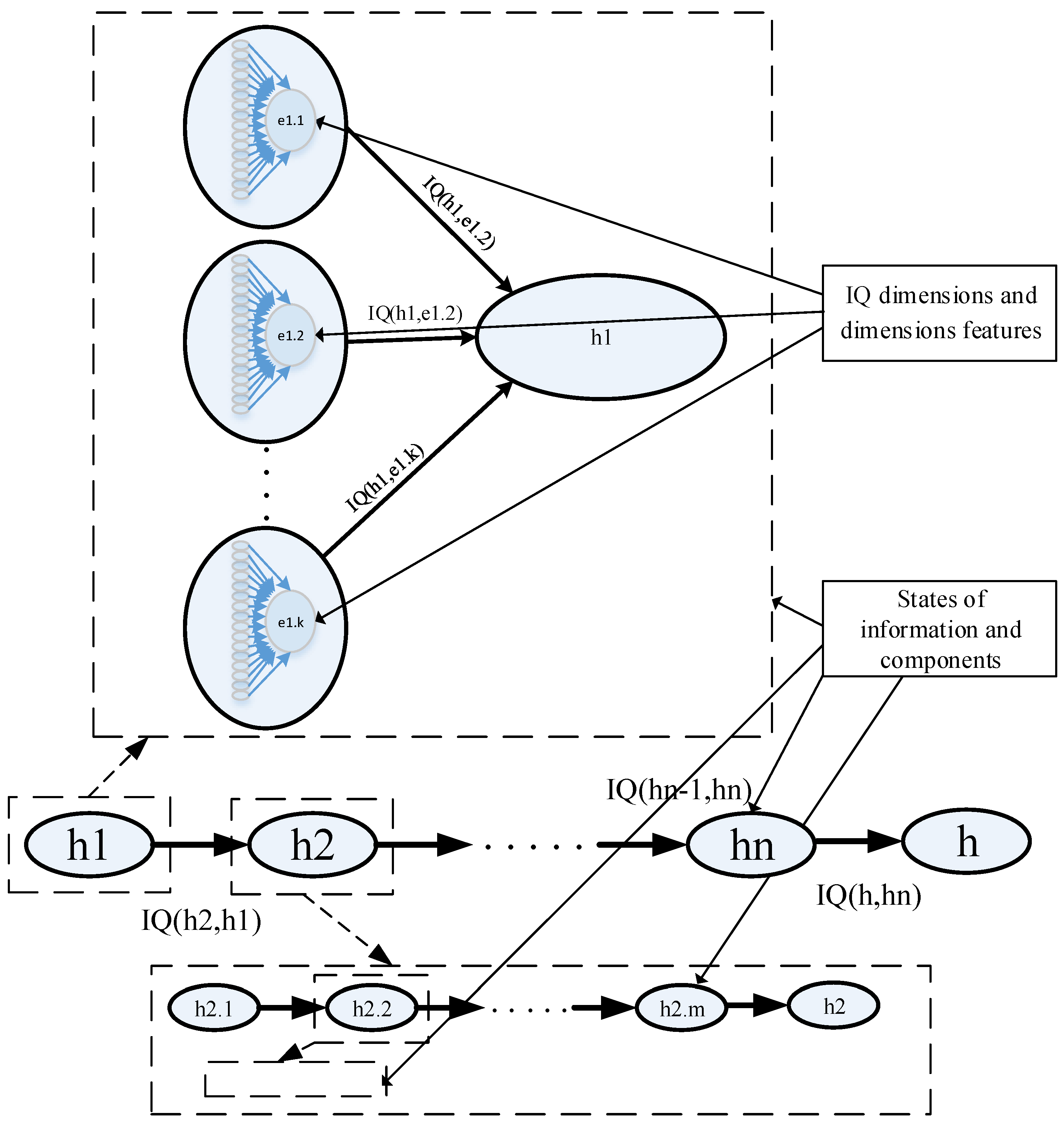
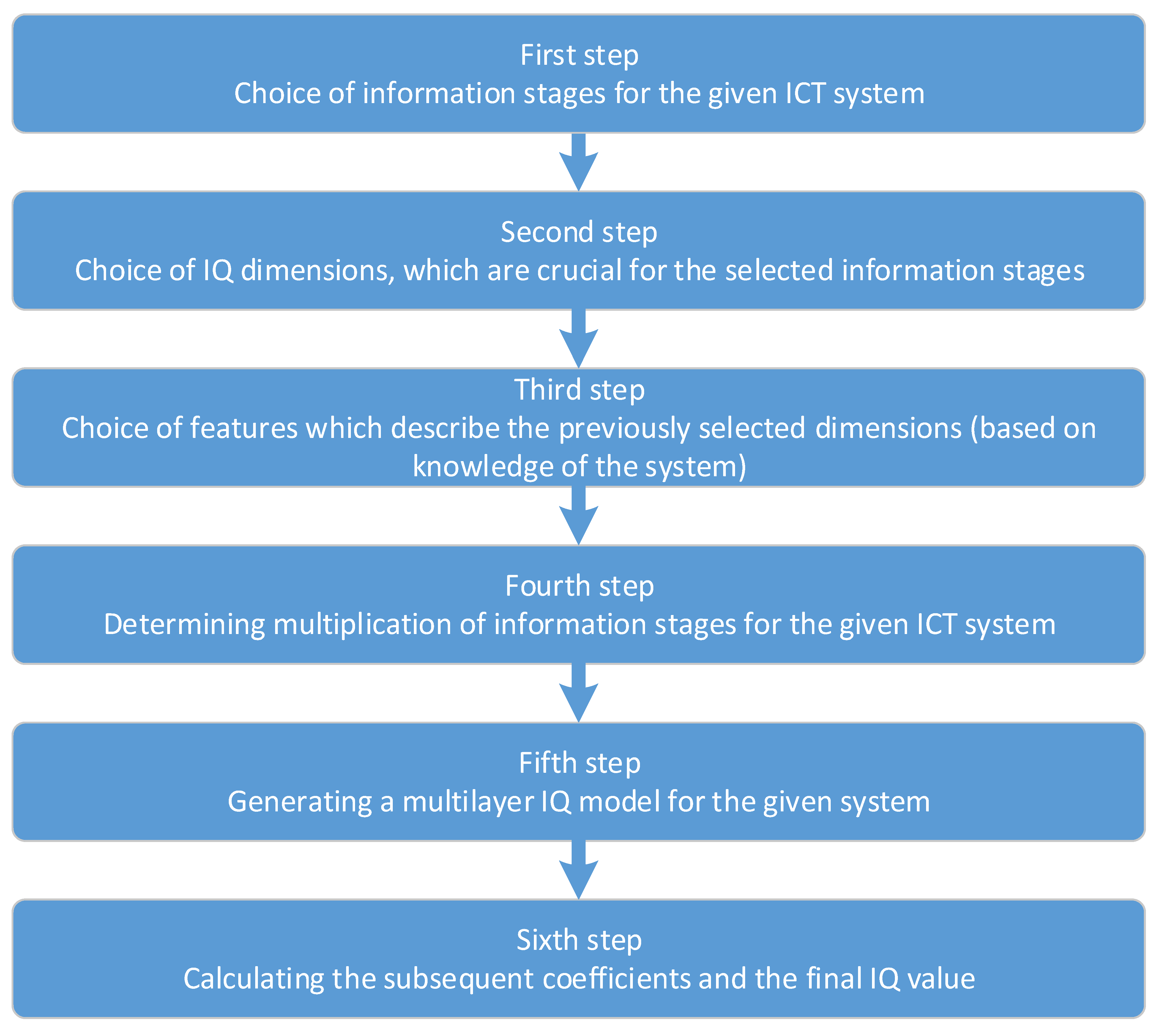

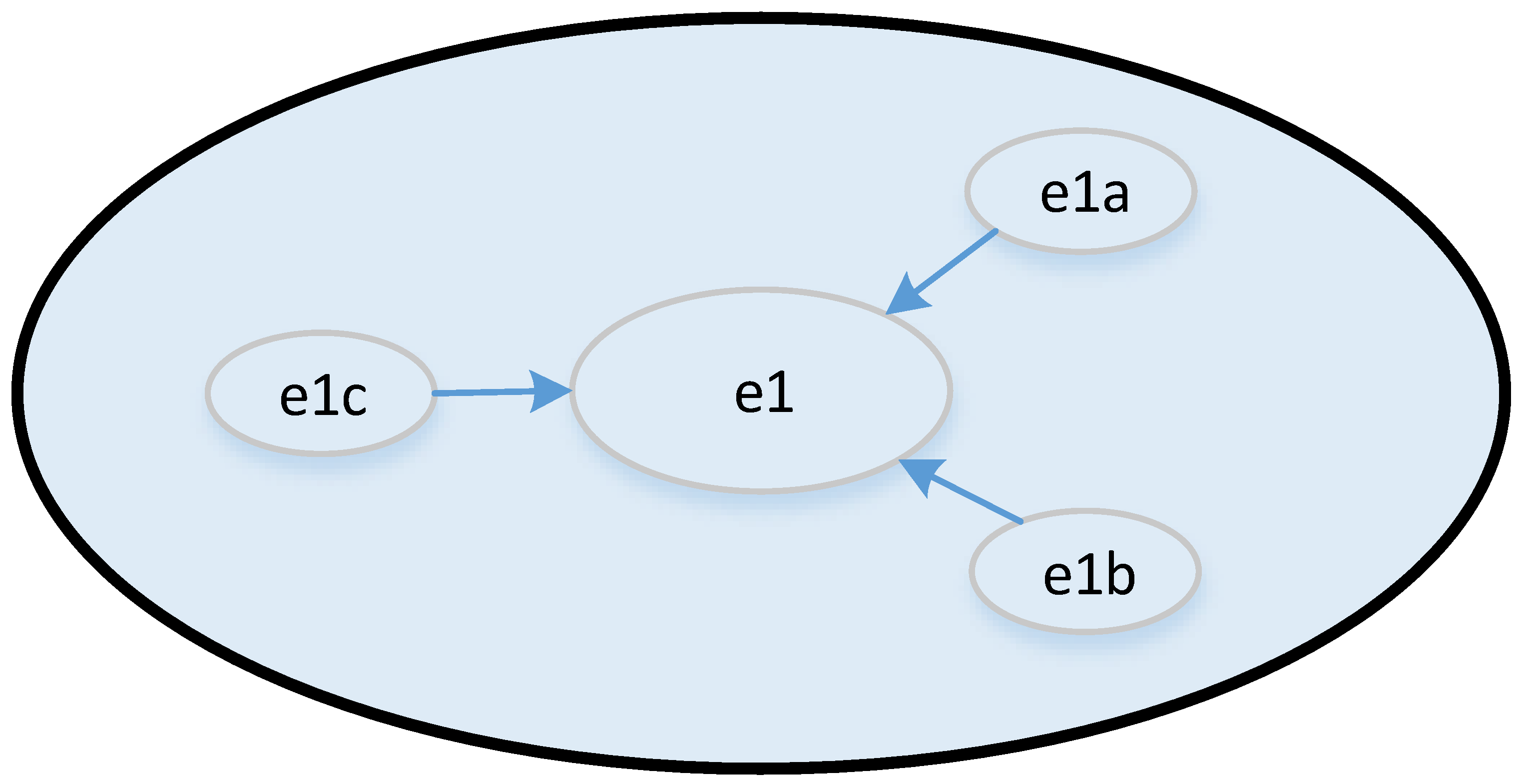
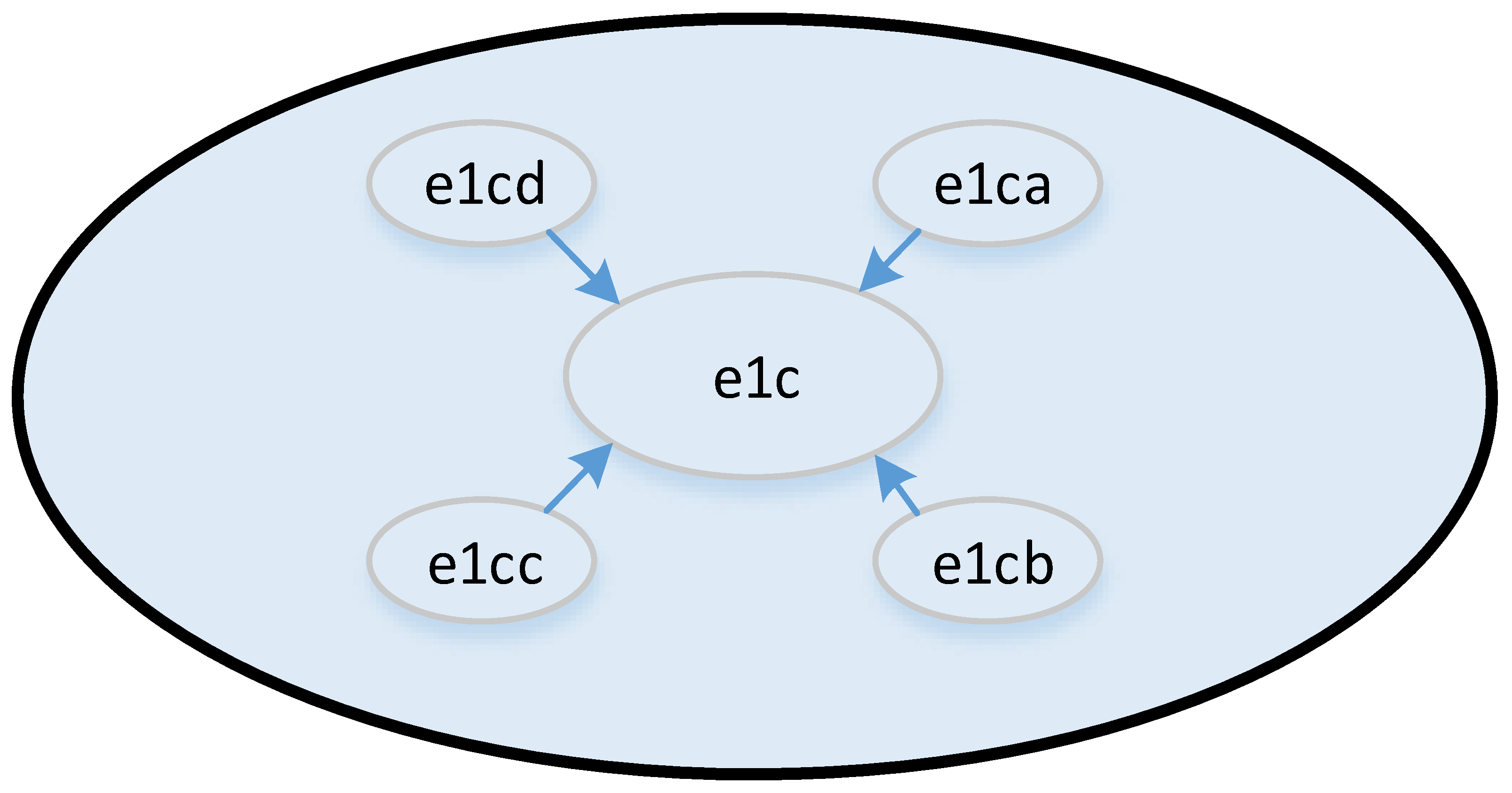
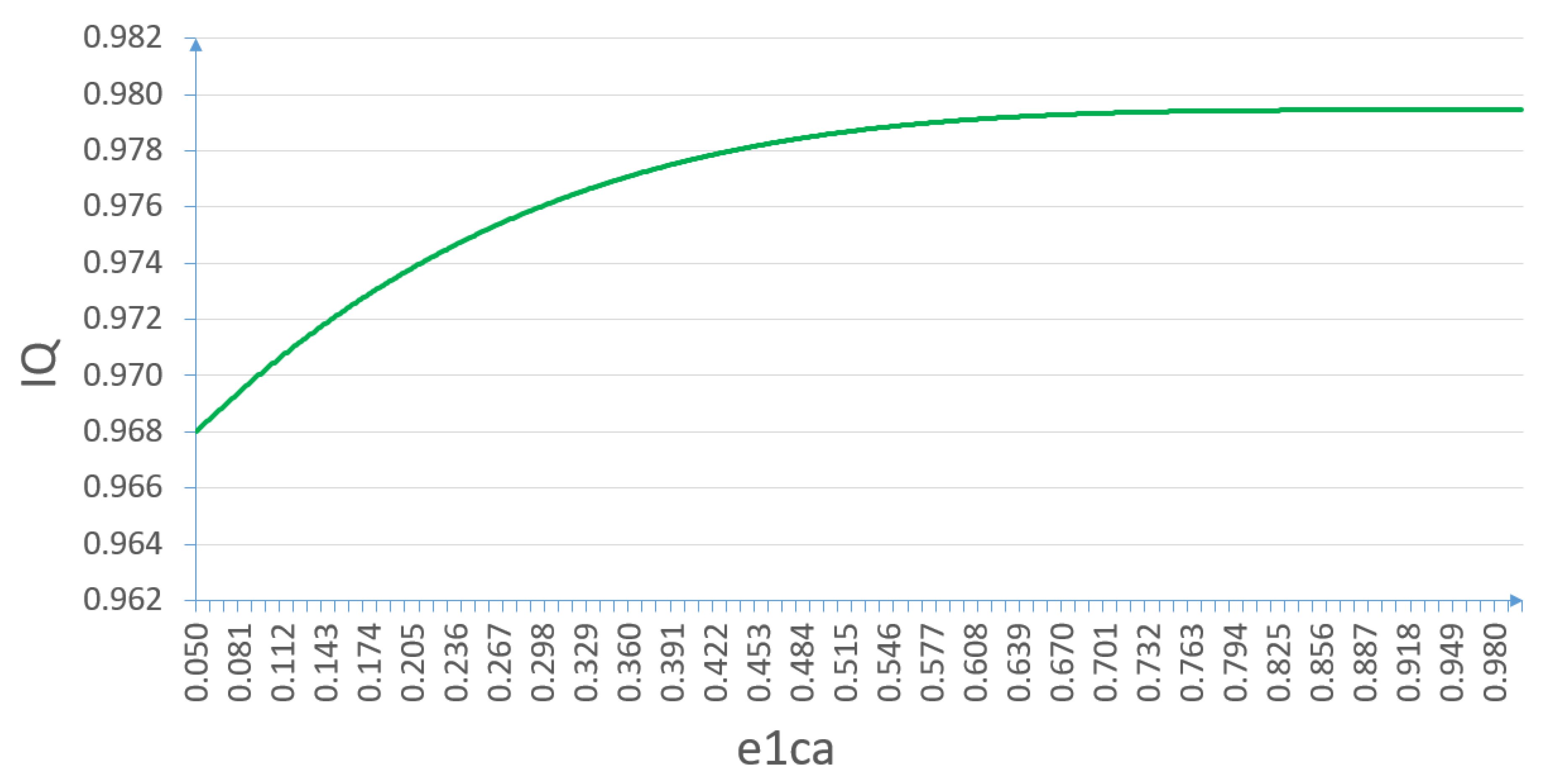
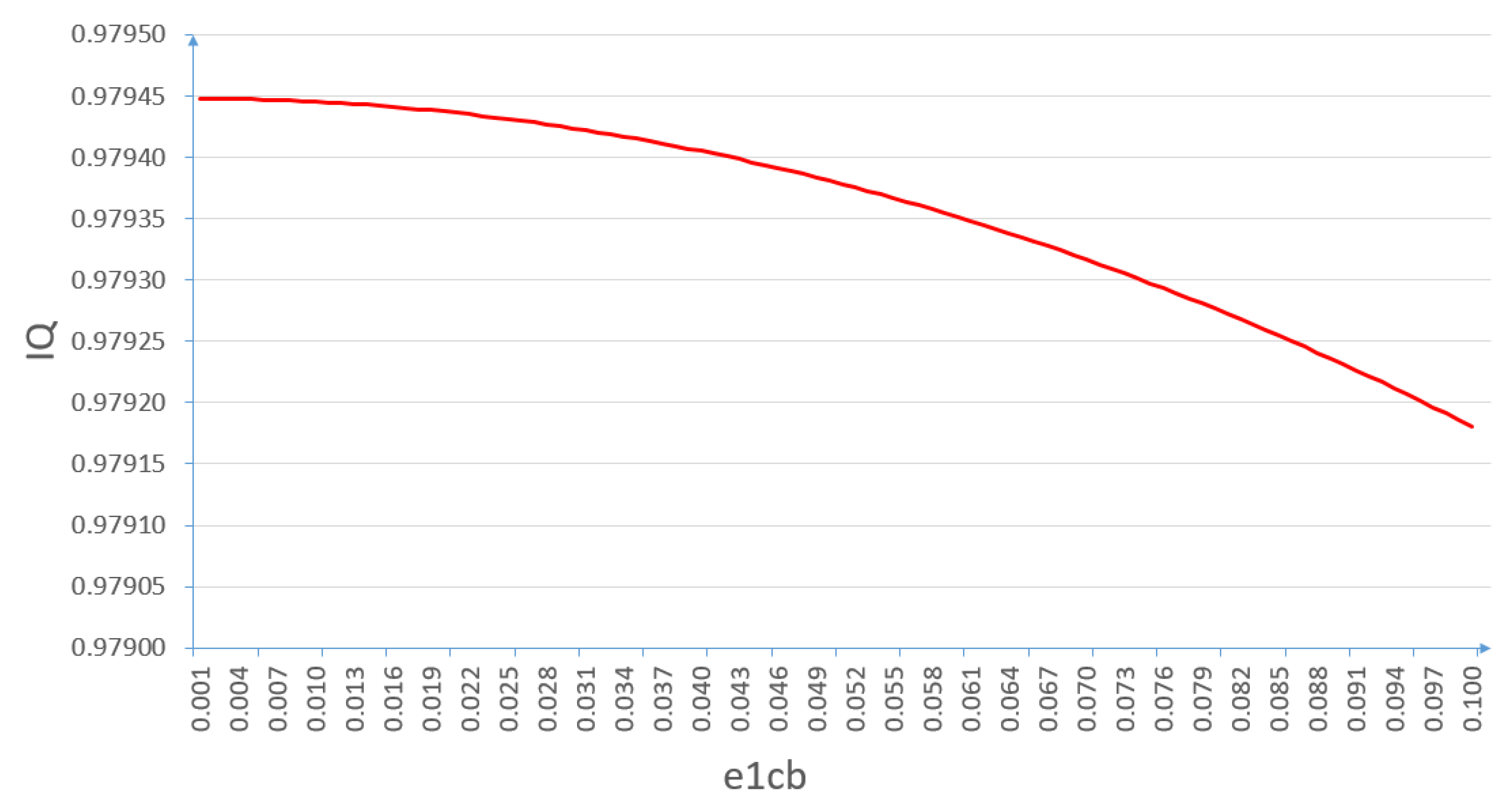
| No. | Name of the Dimension | Dimension’s Interpretation |
|---|---|---|
| 1 | Availability (Dav) | This dimension determines the possibility of exploiting the ICT element on demand in a given time and by using an authorized process. This dimension is directly related to the security of information. |
| 2 | Appropriate amount of data (Daad) | This dimension determines what amount of data are appropriate to enable task execution and simultaneously indicates that the given amount is sufficient and that more data could decrease the quality of information. |
| 3 | Believability (Dbel) | This dimension determines the degree to which information reflects reality. It can also be related to the believability of the source of information. |
| 4 | Completeness (Dcom) | This dimension determines whether the data are sufficient to execute a particular task. |
| 5 | Concise representation (Dccr) | This dimension determines the degree to which data are represented. |
| 6 | Consistent representation (Dcsr) | This dimension determines the degree to which data are represented with the same size. |
| 7 | Ease of manipulation (Deom) | This dimension determines how easy it is to process these data for different task applications. |
| 8 | Free of error (Dfoe) | This dimension determines to what degree data are free of error. |
| 9 | Interpretability (Dinter) | This dimension determines the degree to which data are clear and represented in appropriate languages and symbols. |
| 10 | Objectivity (Dobj) | This dimension determines to what degree data are not subjective, i.e., limited to a narrow scope. |
| 11 | Relevancy (Drelev) | This dimension determines the degree to which the data are applicable to this particular task. |
| 12 | Reputation (Dreput) | This dimension determines the degree to which data are evaluated for their source and content. |
| 13 | Security (Dsec) | This dimension determines the limitation of data access in order to ensure security and protect from unauthorized access. |
| 14 | Timeliness (Dtim) | This dimension determines the degree to which data are available on time in order to execute the task. |
| 15 | Understandability (Duns) | This dimension determines the data’s understandability. |
| 16 | Value-added (Dvadd) | This dimension determines the advantages of exploiting data and whether the data are beneficial for task execution. |
| Observation | Value |
|---|---|
| e1ca | 0.99 |
| e1cb | 0.001 |
| e1cc | 0.002 |
| e1cd | 0.0005 |
| m2 ({e1ca}) = 0.99 m2 (Θ) = 0.01 | m2 ({e1ca}) | m2 (Θ) |
|---|---|---|
| m1 (Θ) | m3 ({e1ca}) | m3 (Θ) |
| m4 ({e1cb}) = 0.001 m4 (Θ) = 0.999 | m4 ({e1cb}) | m4 (Θ) |
|---|---|---|
| m3 ({e1ca}) | m5 ({Ø}) | m5 ({e1ca}) |
| m3 (Θ) | m5 ({e1cb}) | m5 (Θ) |
| m6 ({e1cc}) = 0.002 m6 (Θ) = 0.998 | m6({e1cc}) | m6 (Θ) |
|---|---|---|
| m5 ({Ø}) | m7 ({Ø}) | m7 ({Ø}) |
| m5 ({e1cb}) | m7 ({e1cb}) | m7 ({e1cb}) |
| m5 ({e1ca}) | m7 ({Ø}) | m7 ({e1ca}) |
| m5 (Θ) | m7 ({e1cc}) | m7 (Θ) |
| m8 ({e1cd}) = 0.0005 m8 (Θ) = 0.9995 | m8({e1cd}) | m8 (Θ) |
|---|---|---|
| m7 ({Ø}) | m9 ({Ø}) | m9 ({Ø}) |
| m7 ({e1cc}) | m9 ({e1cc}) | m9 ({e1cc}) |
| m7 ({e1cb}) | m9 ({e1cb}) | m9 ({e1cb}) |
| m7 ({e1ca}) | m9 ({Ø}) | m9 ({e1ca}) |
| m7 (Θ) | m9 ({e1cd}) | m9 (Θ) |
| Observation | Value |
|---|---|
| e1a | 0.88 |
| e1b | 0.91 |
| e1c | 0.9801 |
| Observation | Value |
|---|---|
| e1 | 0.99944 |
| e2 | 0.98 |
Publisher’s Note: MDPI stays neutral with regard to jurisdictional claims in published maps and institutional affiliations. |
© 2021 by the authors. Licensee MDPI, Basel, Switzerland. This article is an open access article distributed under the terms and conditions of the Creative Commons Attribution (CC BY) license (https://creativecommons.org/licenses/by/4.0/).
Share and Cite
Stawowy, M.; Duer, S.; Paś, J.; Wawrzyński, W. Determining Information Quality in ICT Systems. Energies 2021, 14, 5549. https://doi.org/10.3390/en14175549
Stawowy M, Duer S, Paś J, Wawrzyński W. Determining Information Quality in ICT Systems. Energies. 2021; 14(17):5549. https://doi.org/10.3390/en14175549
Chicago/Turabian StyleStawowy, Marek, Stanisław Duer, Jacek Paś, and Wojciech Wawrzyński. 2021. "Determining Information Quality in ICT Systems" Energies 14, no. 17: 5549. https://doi.org/10.3390/en14175549
APA StyleStawowy, M., Duer, S., Paś, J., & Wawrzyński, W. (2021). Determining Information Quality in ICT Systems. Energies, 14(17), 5549. https://doi.org/10.3390/en14175549








